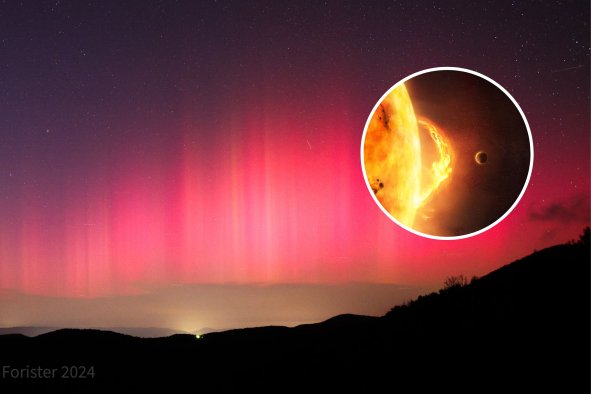The European Space Agency's (ESA) Hera mission is officially underway following the successful launch of SpaceX's Falcon 9 rocket on Monday morning. The mission, if successful, will provide key understanding on how to protect Earth from massive asteroid impacts in the future, ensuring we don't go the way of the dinosaurs.
The mission lifted off from Cape Canaveral, Florida, just in time, with Hurricane Milton approaching and threatening to disrupt launch conditions in the following hours.
"With [Hera], Europe is bringing what was once only a sci-fi concept of asteroid deflection into a repeatable technique for planetary defense," ESA Director General, Josef Aschbacher, said in a post on X.
The Hera space probe will now embark on a multiyear journey, traveling via Mars toward its target—a binary asteroid system more than 60 million miles from Earth, according to Sky Live.
The system consists of two celestial bodies: Didymos, a mountain-sized asteroid stretching 2,500 feet across, and its smaller companion, Dimorphos, which is comparable in size to the Great Pyramid of Giza.
NASA's DART (Double Asteroid Redirection Test) mission made history in 2022 when it became the first spacecraft to intentionally collide with an asteroid in this binary system. DART impacted Dimorphos at 14,000 miles per hour, altering its orbital period around Didymos by 33 minutes.
While the mission succeeded in changing the asteroid's trajectory, scientists are eager to learn more about the exact effects of the impact, which sent a plume of dust and debris thousands of miles into space.
This is where Hera comes into play. Its mission will provide crucial data on the aftermath of DART's collision, offering insights that could be pivotal if humanity ever faces the threat of a hazardous asteroid on a collision course with Earth.
Upon its arrival in late 2026, Hera will deploy two miniature spacecraft known as CubeSats to explore the asteroids. The first CubeSat, Milani, will act as a mineral prospector, while the second, Juventas, will conduct radar surveys to probe the asteroids' internal structures.
These CubeSats will be housed within "Deep Space Deployers" during Hera's two-year journey to ensure their protection and functionality. Once at the asteroid system, they will be deployed sequentially at a slow speed—only a few centimeters per second—to prevent them from drifting away in the weak gravitational field.
This mission also marked a return to form for SpaceX's Falcon 9 rocket after a recent review by the Federal Aviation Administration (FAA). The investigation followed a deorbit burn issue on a previous mission, leaving the Falcon 9's participation in Hera's launch in question. However, the FAA issued a license in time, allowing the rocket to carry Hera into space without further delay.
Other launches scheduled for later this week have had to be postponed as Hurricane Milton heads toward the Florida Peninsula, including the Jupiter-bound Europa Clipper and the return of three NASA astronauts and one cosmonaut from the International Space Station.
Do you have a tip on a science story that Newsweek should be covering? Do you have a question about the Hera mission? Let us know via science@newsweek.com.
Disclaimer: The copyright of this article belongs to the original author. Reposting this article is solely for the purpose of information dissemination and does not constitute any investment advice. If there is any infringement, please contact us immediately. We will make corrections or deletions as necessary. Thank you.



